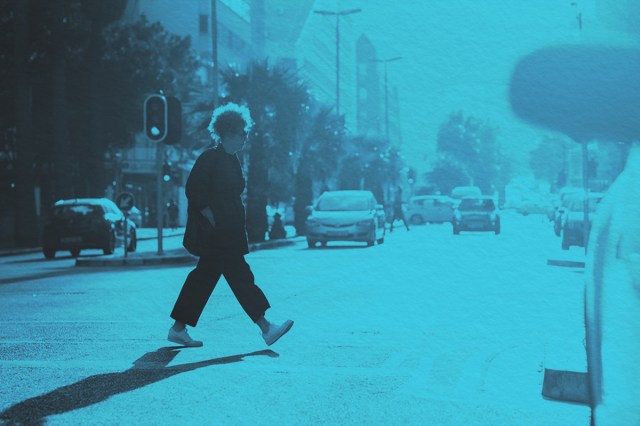
We’ve all seen them — pedestrians creeping out into the intersection against the light, ready to dash across the street, or folks running across the roadway in the middle of a block. It’s a risky (even illegal in many places) practice, but it has a cutesy nickname. This thrill-seeking pedestrian practice is known as “jaywalking.”
“Jaywalker” is the noun version of the intransitive verb “jaywalk,” which means “to cross a street carelessly or at an unusual or inappropriate place or in a dangerous or illegal direction so as to be endangered by the traffic.” Some cities have bigger jaywalker populations than others, especially those with major city centers such as New York, San Francisco, Chicago, Mumbai, and Seoul.
The “jay” in the first half of the word is a type of bird, but when the term was coined, “jay” also meant “a person lacking experience (as in city ways) or polish; an unsophisticated, countrified, or gullible person.” It’s old-fashioned slang now, but in the early 20th century, a jay in a new city didn’t understand the rules and might have embarrassed themself.
Before we had jaywalkers, though, jay-drivers were the scourge of the road — these were horse-carriage drivers who drove on the wrong side of the road. Then cars started infiltrating American cities and the term “jaywalker” entered the lexicon. In a 1911 article in the Kansas City Star, a writer spoke out against New Yorkers: “Kansas City used to consider itself a town of jay walkers. That is another line in which New York deserves the discredit of being at the front of the procession.”
In this context, the jaywalker is someone who walks in a disorganized manner purely on the sidewalk. Like its predecessor jay-driver, the original jaywalker was a pedestrian who didn’t stay in their proper lane. In a twist on the definition of the word, the insult of “jay” was applied to New York city-dwellers ruining the orderly nature of Kansas City.
The word “jaywalking” eventually evolved to apply to pedestrians leaving the sidewalk and bringing their disorderly ways out into the street. Many towns and cities have specific ordinances against jaywalking, which has preserved the terminology in the lexicon. Despite the perseverance of the word, we can’t condone the practice — don’t be a jay, and look both ways when you cross the street.

















